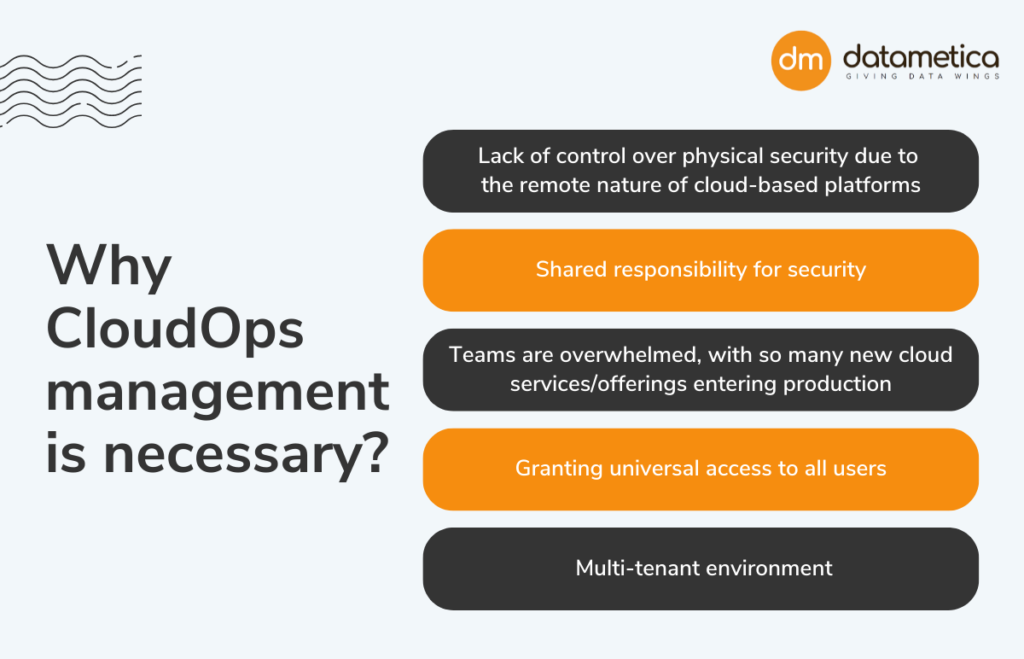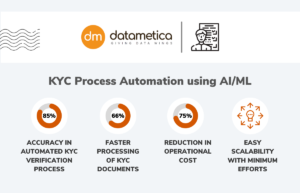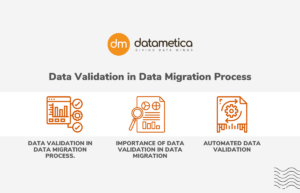In recent years, a large number of businesses have migrated to the cloud as part of their digital transformation and application modernization initiatives. While it was a vital part of being more resilient as an organization, what comes next is equally crucial. Many businesses are now focusing on cloud-based operations management. CloudOps isn’t about new tools or technology; it’s about how you use them within the framework of your existing procedures. A well thought out plan is essential in all areas, from security to problem management, monitoring, and performance.
Many businesses have migrated many of their systems to the cloud and now must manage a variety of cloud configurations such as multi-cloud, hybrid cloud, or hybrid IT—the key now is to understand how to effectively manage the associated complexities. Operating protocols for long-term cloud operations is required.
Readjusting the CloudOps management practices
The absence of standardized operational rules is a common oversight among businesses switching to cloud-based technologies. Most IT teams believe that cloud operations will be handled by existing teams and that the cloud computing system will simply be another platform that must be maintained, secured, and governed. However, they discover that the methodologies and technologies used for conventional operations do not function well with cloud-based deployments. The five challenges listed below demonstrate why CloudOps management is necessary in today’s world:

Challenge #1: Lack of control over physical security due to the remote nature of cloud-based platforms
Because cloud systems are not directly under the physical control of operations teams, great caution must be exercised in how they operate. They are located away from the organization’s physical location, making them challenging to administer. The majority of the organization’s direct control is transferred to the public cloud provider. In exceptional circumstances, it is feasible to share control with a few public cloud providers, but not many.
Challenge #2: Shared responsibility for security
Security operations (SecOps) must be divided between business CloudOps teams and cloud providers. And this can quickly become confusing. Most breaches in public clouds did not occur due to a lack of security technology; rather, there’s a lack of clarity on what each side is supposed to do. The organization’s share of duty varies depending on the type of service chosen. Before signing the agreements and bringing on the migration partner, it is critical to explicitly define the expectations.
Challenge #3: Teams are overwhelmed, with so many new cloud services/offerings entering production
The “abundance of options” or the need to select “best-of-breed” can be sources of increased complexity, which the CloudOps team finds the most challenging. Things get tricky when it comes to connecting and coordinating numerous services/offers, which come in a variety of complexities and features.
Challenge #4: Granting universal access to all users
One of the primary selling points of cloud platforms is the democratization of cloud compute and resources. However, the advantage quickly becomes a constraint when all users have universal access and begin deploying infrastructure that might jeopardize the security of the organization’s data. The absence of adequate mechanisms for governance and compliance might result in data loss and security risks.
Challenge #5: Multi-tenant environment
When multiple customers share the same Infrastructure platform in a multi-tenant environment, security might be compromised. Although there is a logical separation of borders between customers, the security risk is increased in the event of a breach in authentication and access controls.
See how Datametica helped a key player in the banking industry to improve security and reliability through assessment and cloud optimization techniques.
How organizations can ensure CloudOps management
A properly managed CloudOps service provides the following benefits:
- Reducing disruption and increased efficiency
- Ensuring the quality and speed that end-users expect and need
- Justifying the investments and cutting down on the cost of providing cloud services
To succeed with CloudOps, it’s necessary to establish playbooks, skills, toolsets, protocols, and other continuous processes to ensure long-term success.
To prevent threats, a mix of cloud security parameters in the form of traditional measures such as firewalls and access control, as well as cloud-native solutions, is necessary. With stringent account-level governance, organizational policies, and virtual perimeters, data democratization and universal access can be established. Shared security is determined by the services provided by the company (IaaS, PaaS, SaaS). The responsibility of ensuring security can be better understood and implemented if you have a skilled and professional cloud partner.
Conclusion
In a cloud environment, operations management is a part of the service provider’s and customers’s responsibilities. Even though there are multiple approaches, the concepts and general understanding remain the same.
Even if your organization adheres to industry best practices, you must remain vigilant against loss of control due to change and complexity. Datametica is an experienced cloud migration partner and has helped many businesses understand the nuances of cloud operations while ensuring security. Initiate a conversation with us today to learn more.

Anil Aleppy
.
.
.
About Datametica
A Global Leader in Data Warehouse Modernization & Migration. We empower businesses by migrating their Data/Workload/ETL/Analytics to the Cloud by leveraging Automation.



